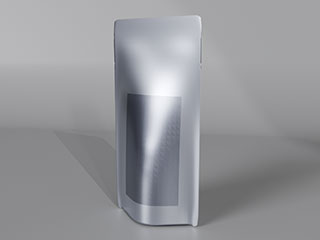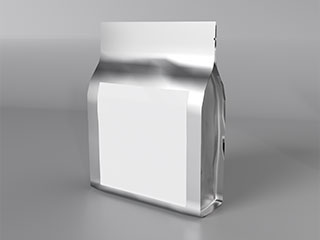
For manufacturers in food, beverage, cosmetics, or pharmaceuticals, choosing the right pouch filling machine isn’t just about efficiency—it’s about protecting product quality, ensuring accuracy, and avoiding costly mistakes. The biggest divide? Liquid vs. powder pouch filling machines. While both handle pouch packaging, their designs, technologies, and capabilities are tailored to the unique challenges of their respective materials. Below, we break down the critical differences you need to know to make the right investment.


The fundamental contrast between liquids (e.g., sauces, oils, juices) and powders (e.g., protein powder, spices, coffee grounds) — viscosity, flowability, and mess potential — dictates every aspect of machine design:
Liquids vary widely in viscosity (from thin water-like fluids to thick pastes like honey or peanut butter), and liquid pouch filling machines are engineered to manage this range without spills, drips, or inconsistent dosing:
Nozzle Design: Uses smooth, wide-bore nozzles for thick liquids (to prevent clogging) or precision narrow nozzles for thin fluids (to avoid splashing). Many models include “drip-free” valves that seal immediately after filling, eliminating residue on pouch tops.
Anti-Foaming Features: For carbonated drinks or frothy liquids (e.g., yogurt drinks), machines integrate slow-fill modes or vacuum-assisted filling to reduce air bubbles, which can compromise seal integrity or cause pouch bulging.
Viscosity Adaptability: High-end liquid machines use adjustable pumps (e.g., piston pumps for thick pastes, peristaltic pumps for shear-sensitive liquids like salad dressings) to maintain consistent flow, even as product temperature or viscosity changes.
Powders pose unique challenges: they can clump (e.g., cocoa powder), generate dust (e.g., with protein powder), or “bridge” (stick together in hoppers, blocking flow). Powder pouch filling machines address these with specialized components:
Feeding Systems: Most use screw feeders (for fine powders) or auger systems (for granular products like sugar) to control flow and prevent bridging. Some add “vibratory hoppers” to break up clumps and ensure steady material supply.
Dust Containment: Critical for worker safety and product purity, these machines include enclosed filling chambers, vacuum extraction ports, or “dust hoods” to capture airborne particles. This is non-negotiable for industries like pharmaceuticals or organic food (where cross-contamination risks are high).
Dosing Precision: Powders can settle or vary in density, so machines often use load cells (weight-based dosing) instead of volume-based systems. For example, a spice manufacturer might rely on a powder machine with ±0.5g accuracy to avoid overfilling expensive herbs.
While both machine types boost productivity, their speed capabilities differ based on how easily the material can be filled and sealed:
Liquid Pouch Filling Machines: Excel at high-speed operations for thin to medium-viscosity liquids. For example, a beverage manufacturer might use a machine that fills 150–250 pouches per minute (ppm) for 500ml juice pouches. Thick liquids (e.g., ketchup) slow this to 80–120 ppm, as the material needs more time to flow into pouches.
Powder Pouch Filling Machines: Typically run at slightly lower speeds (60–180 ppm) due to the need for careful dust control and precise dosing. Fine powders (e.g., protein isolate) may run slower (60–100 ppm) to avoid dust buildup, while free-flowing granular powders (e.g., coffee creamer) can reach 150–180 ppm.
Key Takeaway: A liquid machine’s speed depends on viscosity, while a powder machine’s speed hinges on flowability and dust management.
Food, beverage, and pharmaceutical manufacturers face strict hygiene regulations (e.g., FDA, EU 10/2011). The two machine types differ drastically in how they support cleaning and compliance:
Liquids (especially dairy, sauces, or beverages) are prone to bacterial growth, so liquid machines prioritize easy cleaning:
CIP (Clean-in-Place) Systems: Most industrial liquid machines include built-in CIP loops—spray nozzles inside hoppers, pumps, and nozzles that circulate cleaning solutions (e.g., hot water, sanitizers) without disassembly. This cuts cleaning time by 50% compared to manual scrubbing.
Material Compatibility: Parts in contact with liquids (e.g., nozzles, pumps) are made of food-grade stainless steel or FDA-approved plastics (e.g., PTFE) to resist corrosion and prevent chemical leaching.
Powders stick to surfaces easily, making residue a major compliance risk (e.g., cross-contamination between different spices). Powder machines address this with:
Quick-Disconnect Parts: Hoppers, feeders, and nozzles can be removed in minutes for deep cleaning, without tools. This is critical for manufacturers switching between products (e.g., a bakery using the same machine for flour and cocoa powder).
Smooth Surfaces: Internal components have polished finishes to minimize powder adhesion. Some machines also use “anti-stick” coatings (e.g., Teflon) for ultra-fine powders like baby formula.
To avoid costly mismatches, here’s how leading brands choose between the two:
Beverages: A cold-pressed juice brand uses a piston-driven liquid machine to fill 250ml stand-up pouches with no foaming, achieving 200 ppm.
Condiments: A salsa manufacturer relies on a drip-free liquid machine with CIP to fill 100g pouches, ensuring no residue between batches of mild and spicy salsa.
Personal Care: A shampoo brand uses a peristaltic liquid machine to handle thick, shear-sensitive formulas without damaging ingredients.
Nutrition: A protein powder brand uses a screw-fed powder machine with dust containment to fill 30g pouches, maintaining ±0.3g accuracy and meeting organic certification standards.
Food Staples: A spice company uses a vibratory-hopper powder machine to fill 50g turmeric pouches, preventing clumping and ensuring consistent flavor in every pouch.
Pharmaceuticals: A vitamin manufacturer uses a vacuum-assisted powder machine with stainless steel parts to fill 10g powdered supplement pouches, complying with FDA GMP regulations.
What’s your material’s viscosity/flowability? Thin liquids need precision nozzles; clumpy powders need anti-bridging feeders.
What’s your required throughput? High-speed liquid lines (150+ ppm) suit beverages; powder lines (60–120 ppm) work for spices or supplements.
What compliance standards apply? Food/dairy needs CIP (liquid machines); multi-product lines need quick-clean parts (powder machines).
Ready to find the right pouch filling machine for your product? Contact [PackRight Equipment], a leading supplier of liquid and powder pouch filling systems, for a free needs assessment. Or download our guide: “10 Mistakes to Avoid When Buying a Pouch Filling Machine.”

GET A QUOTE